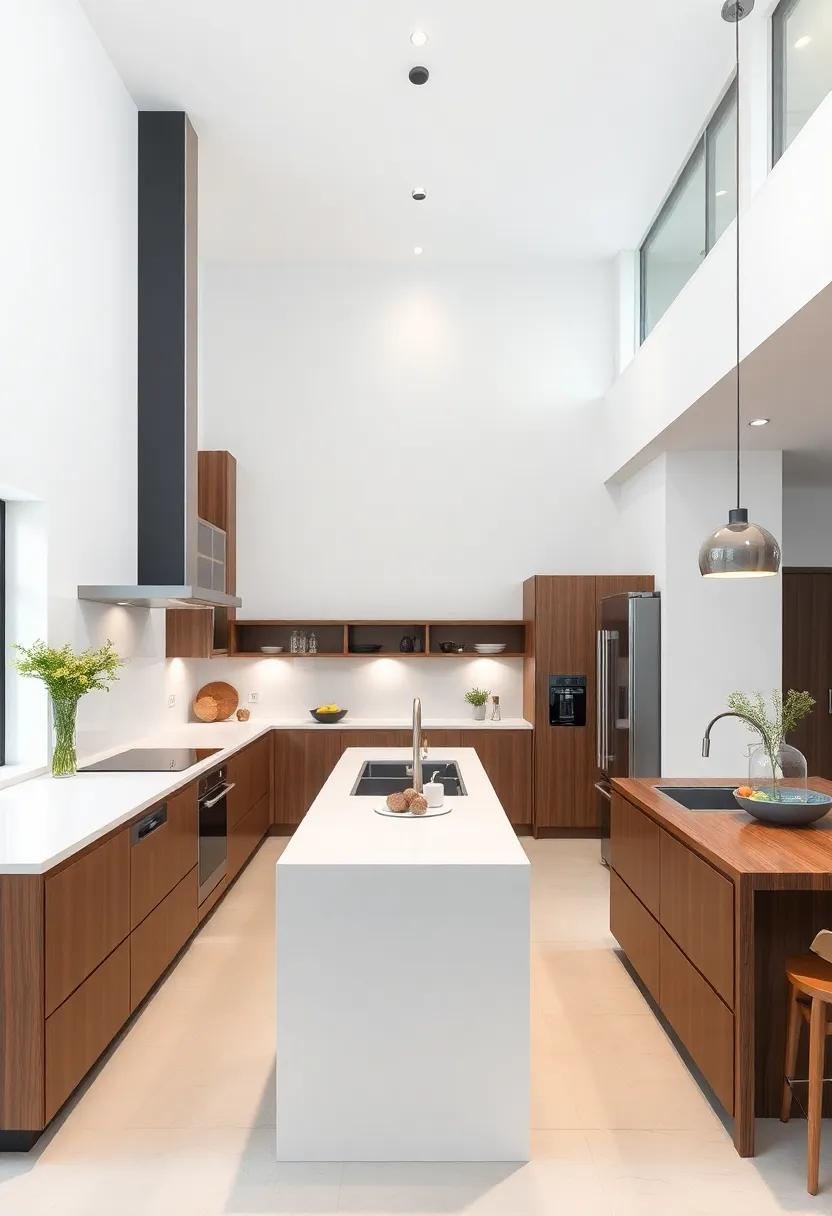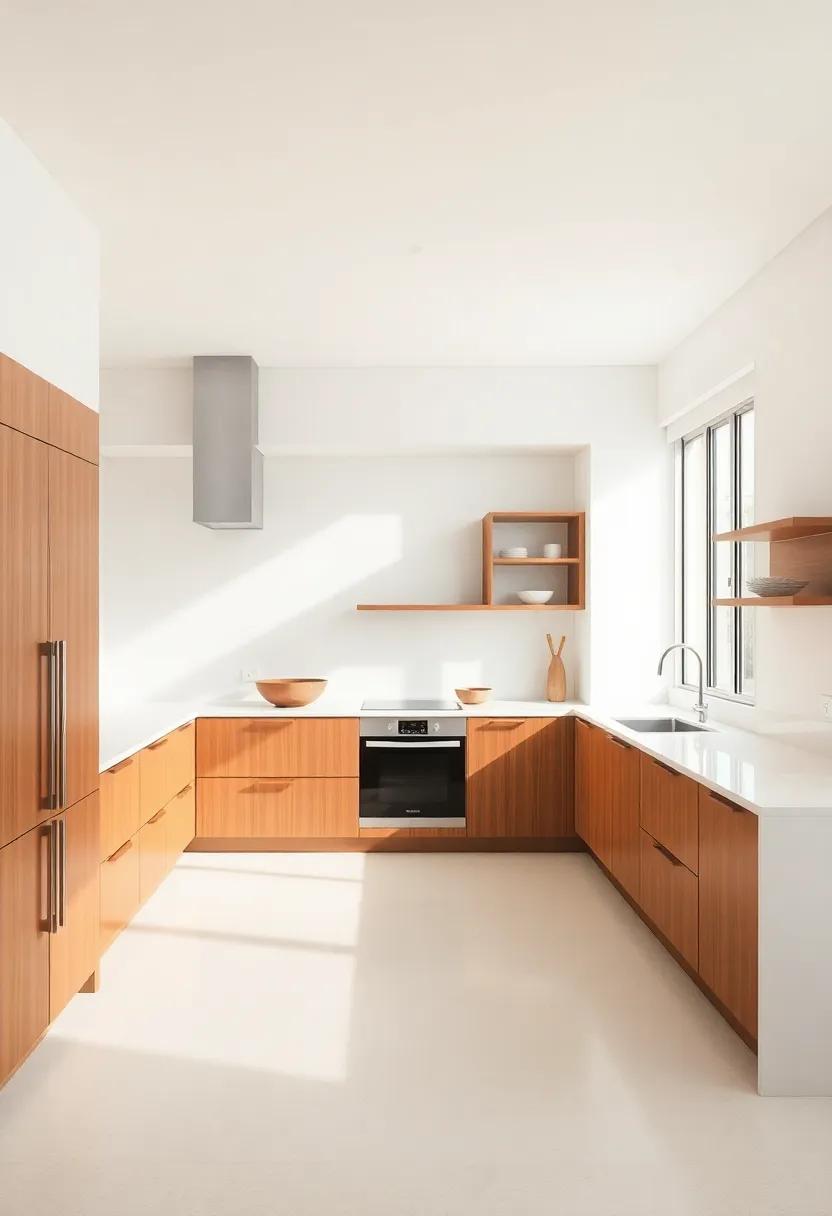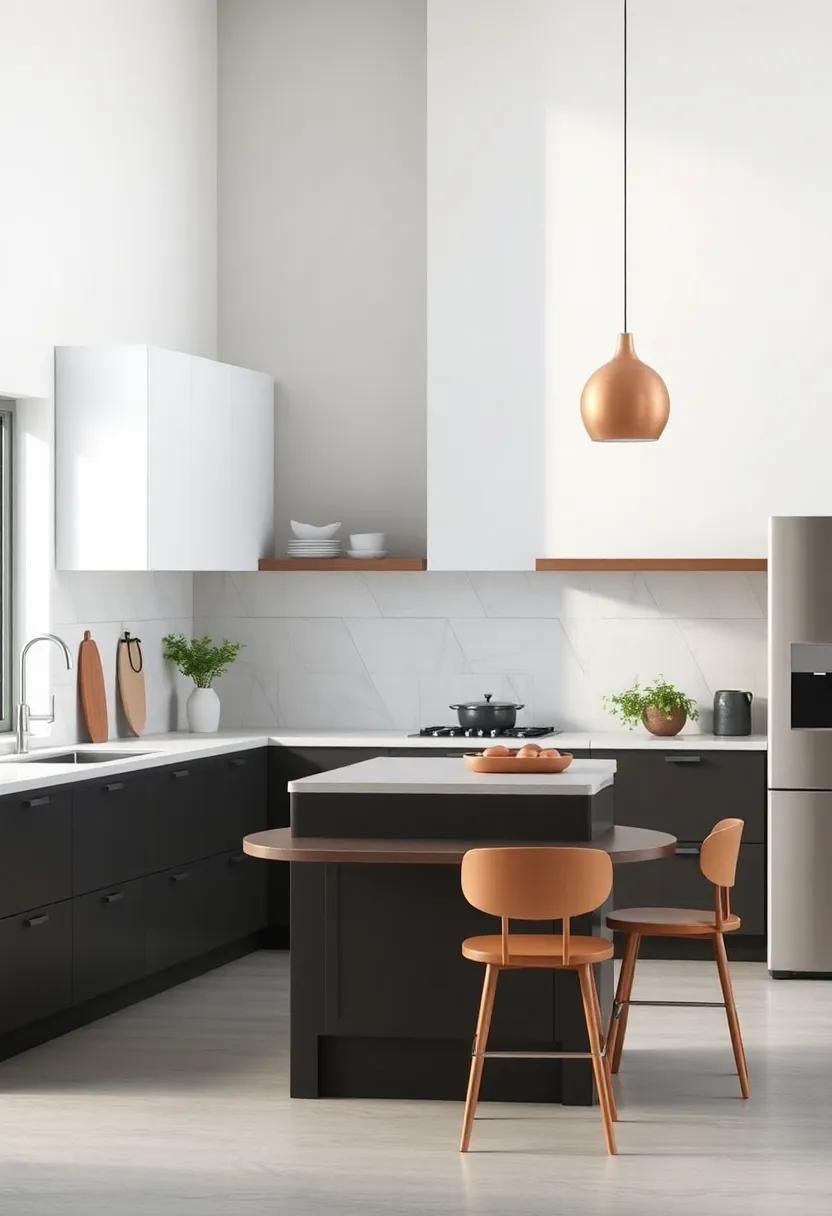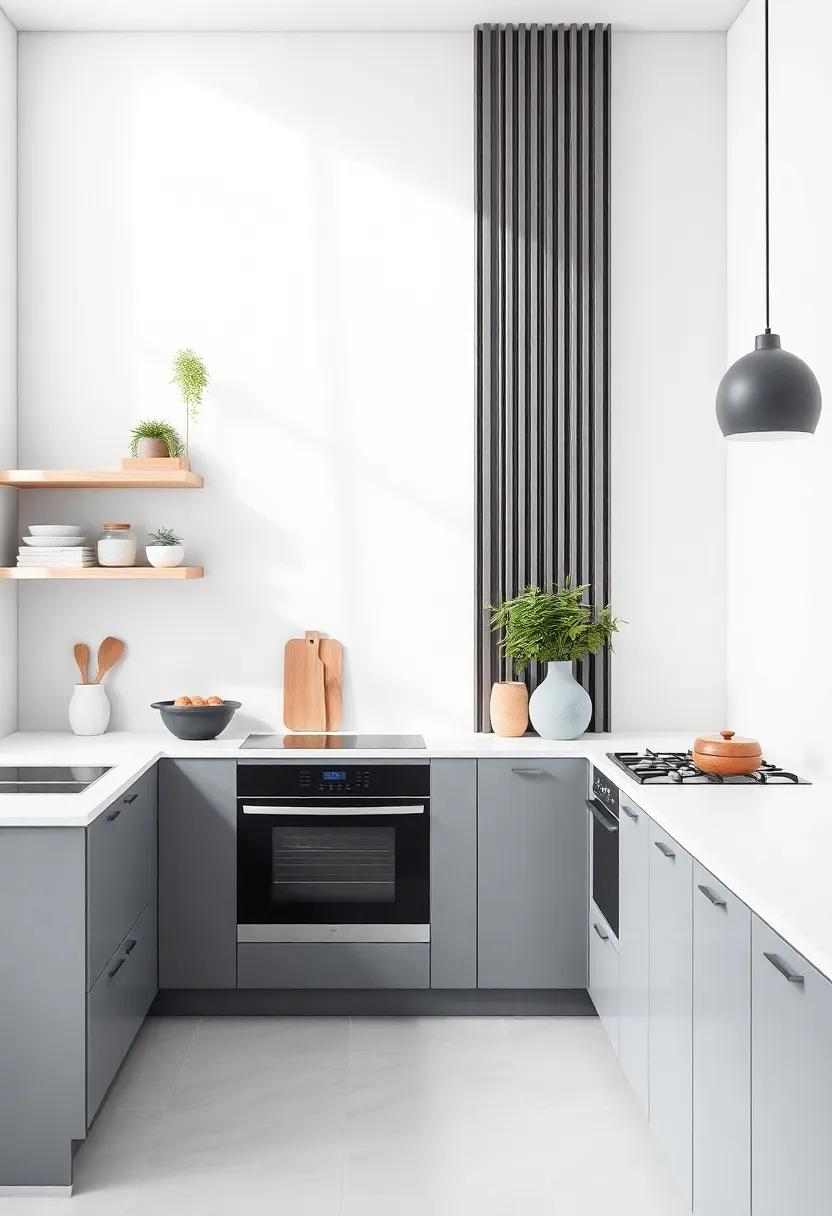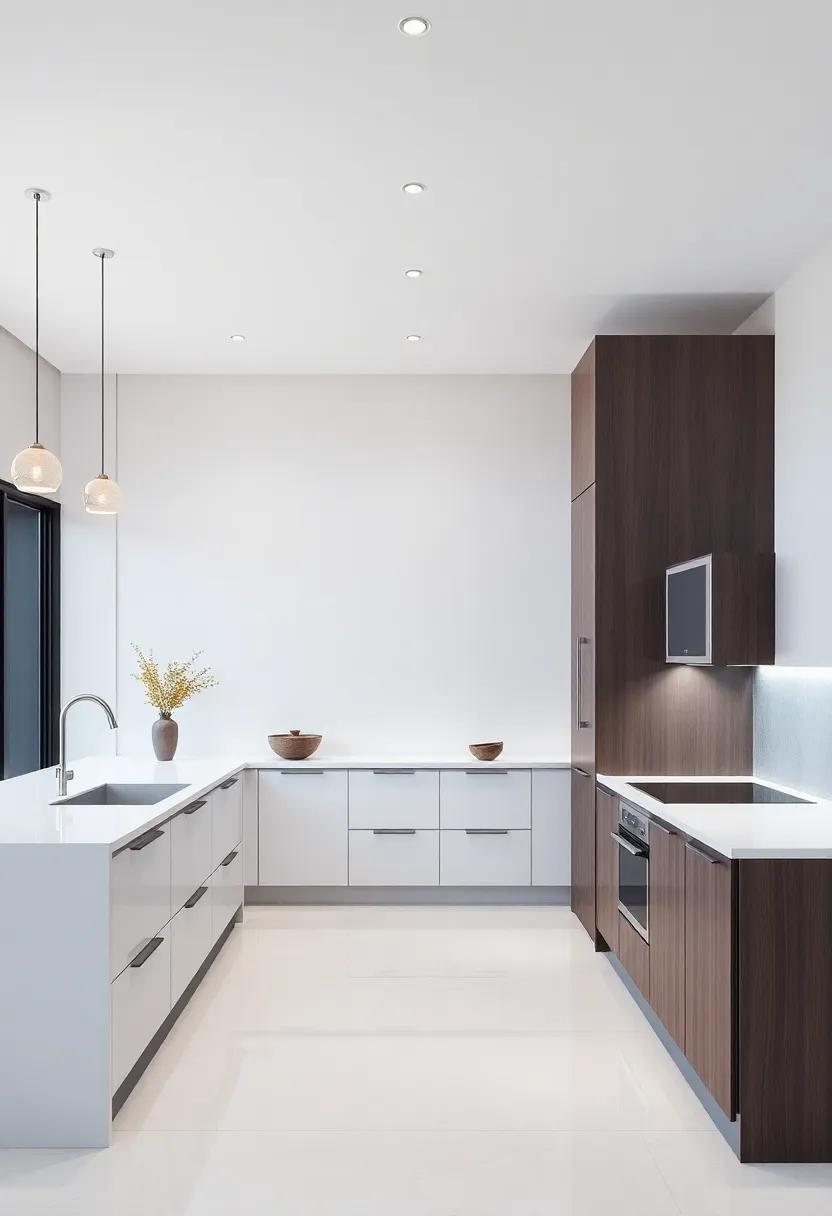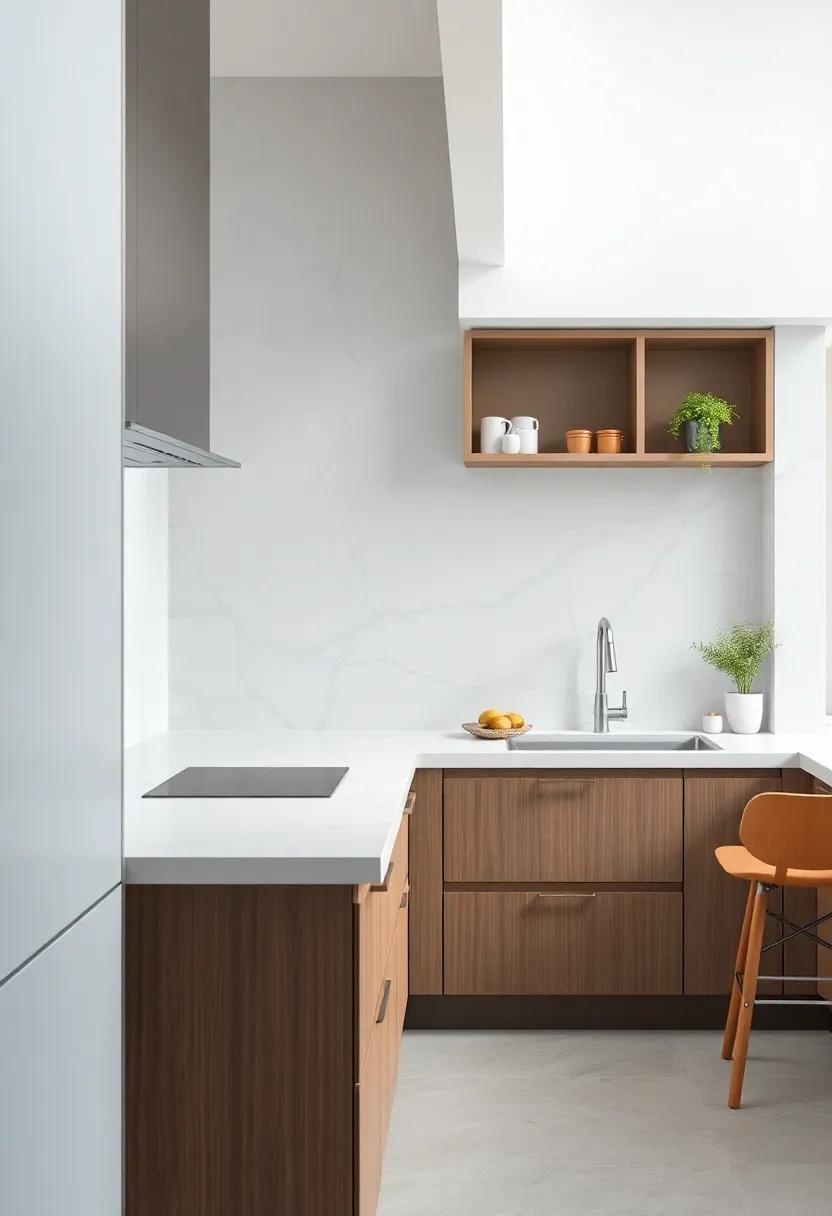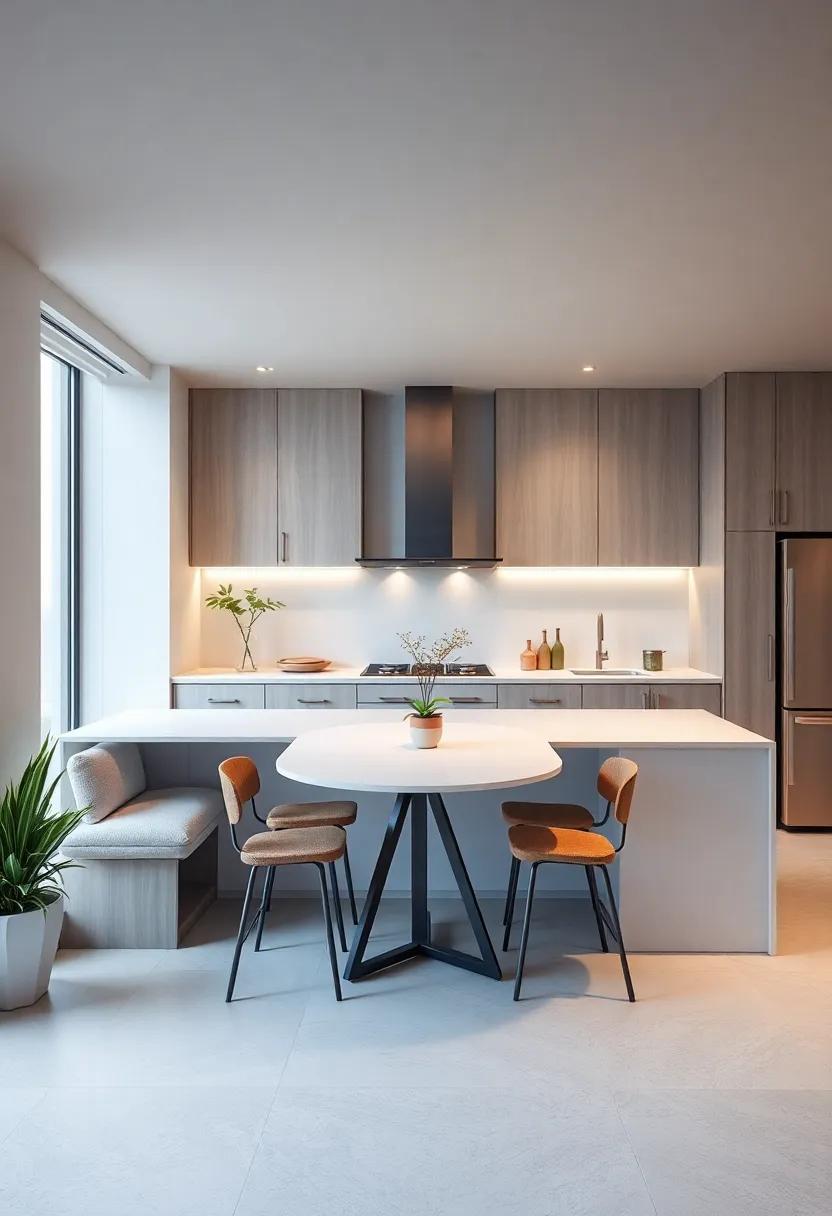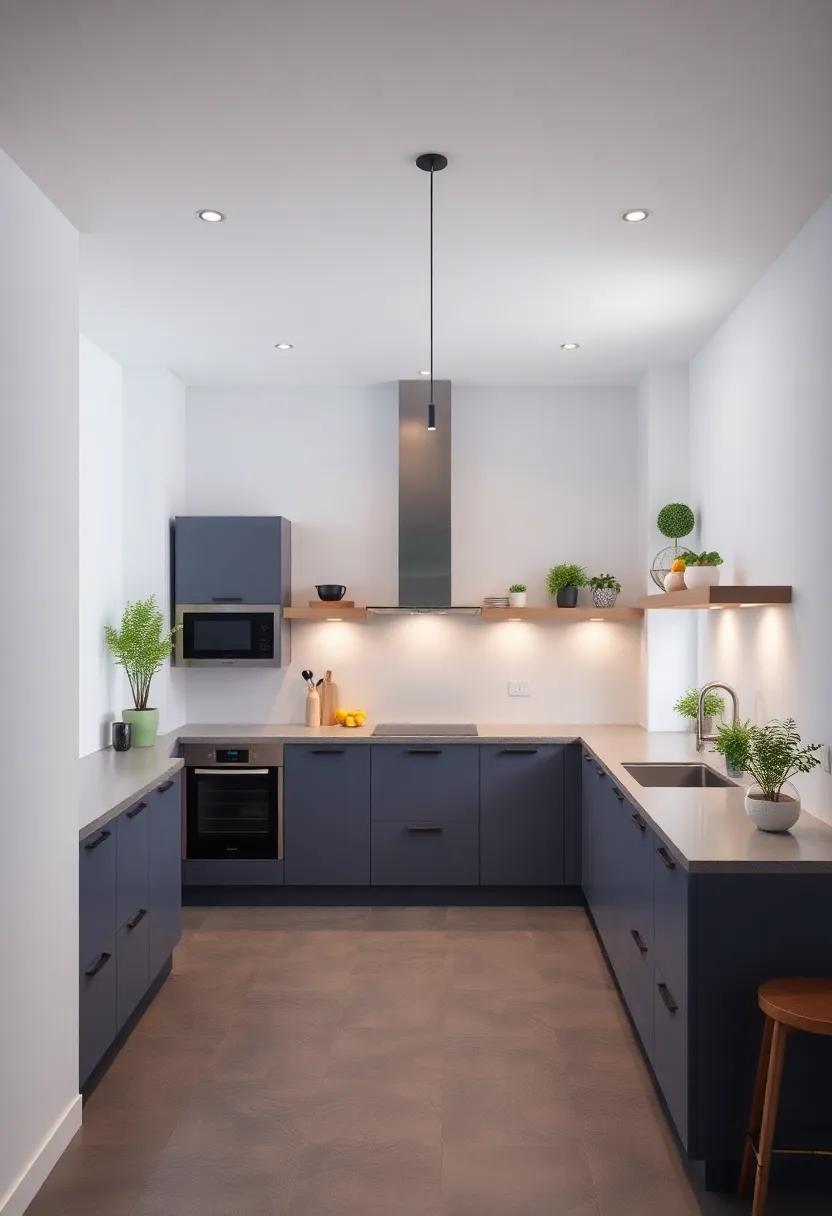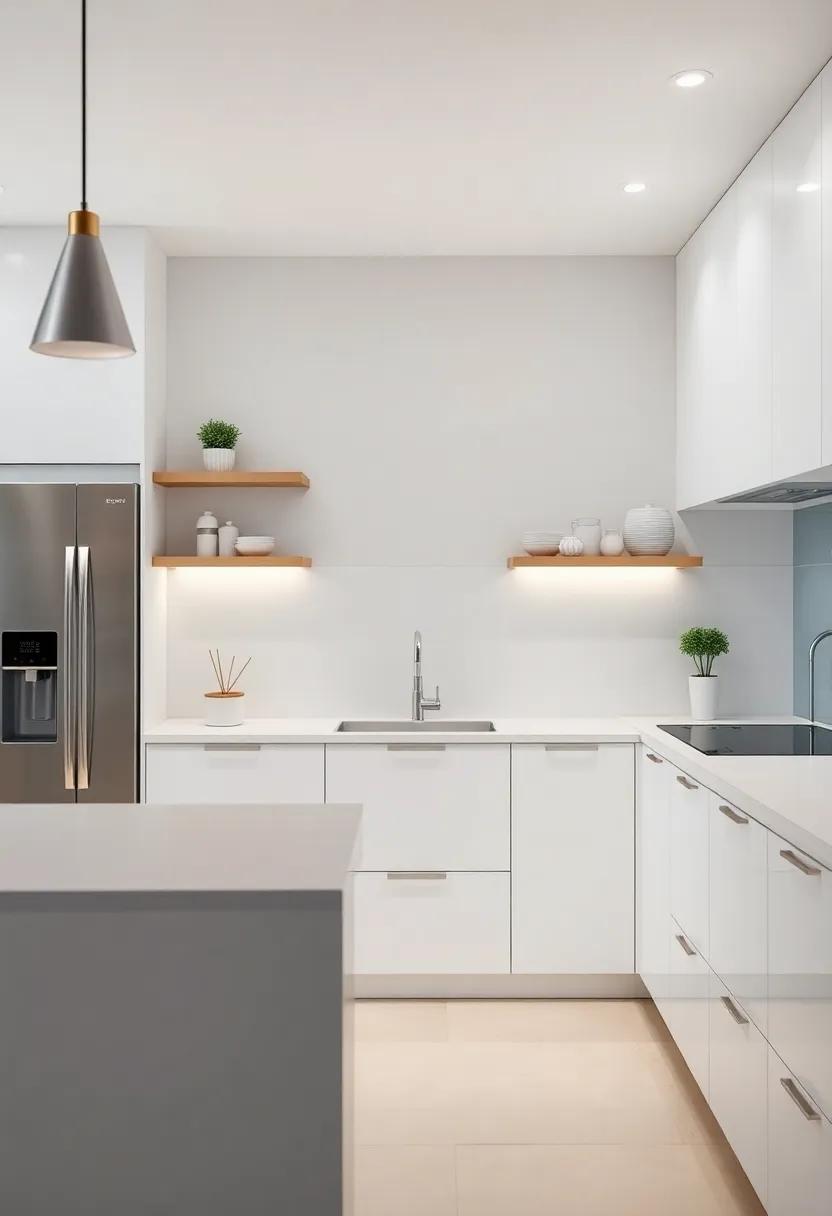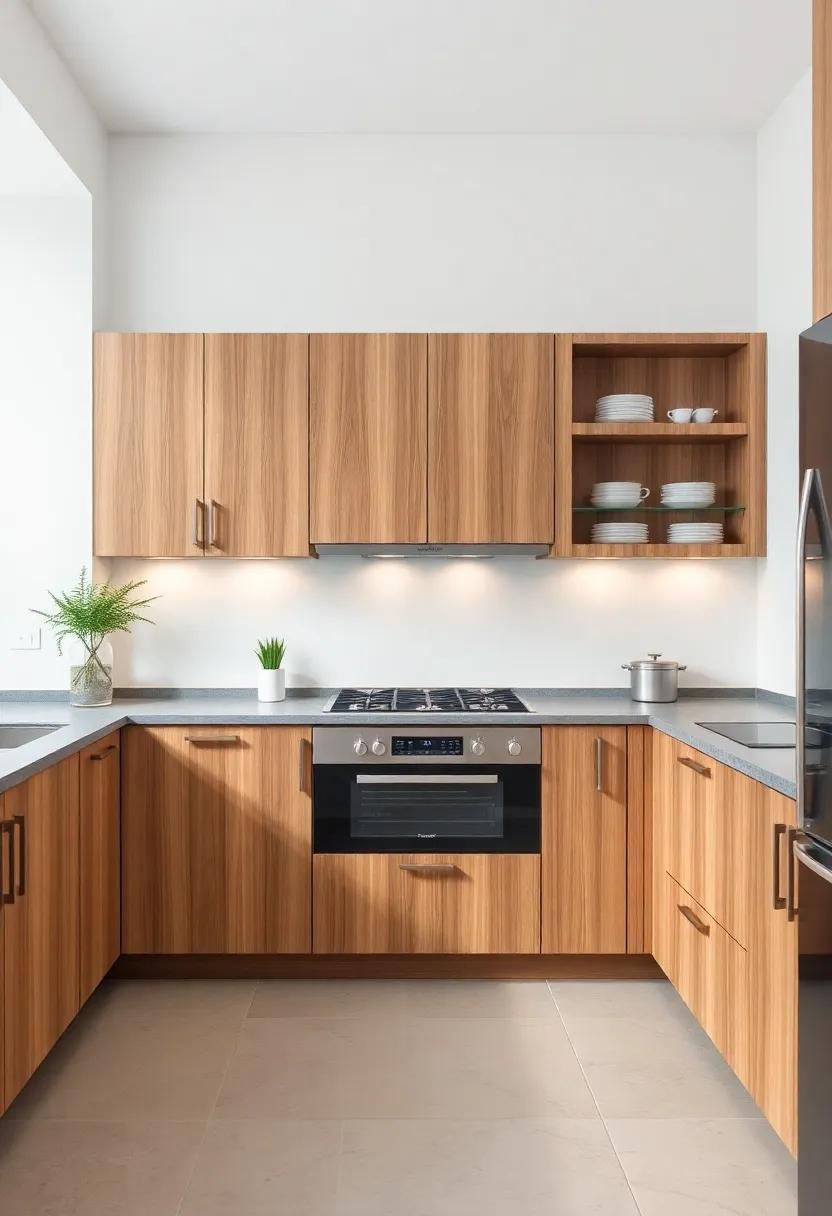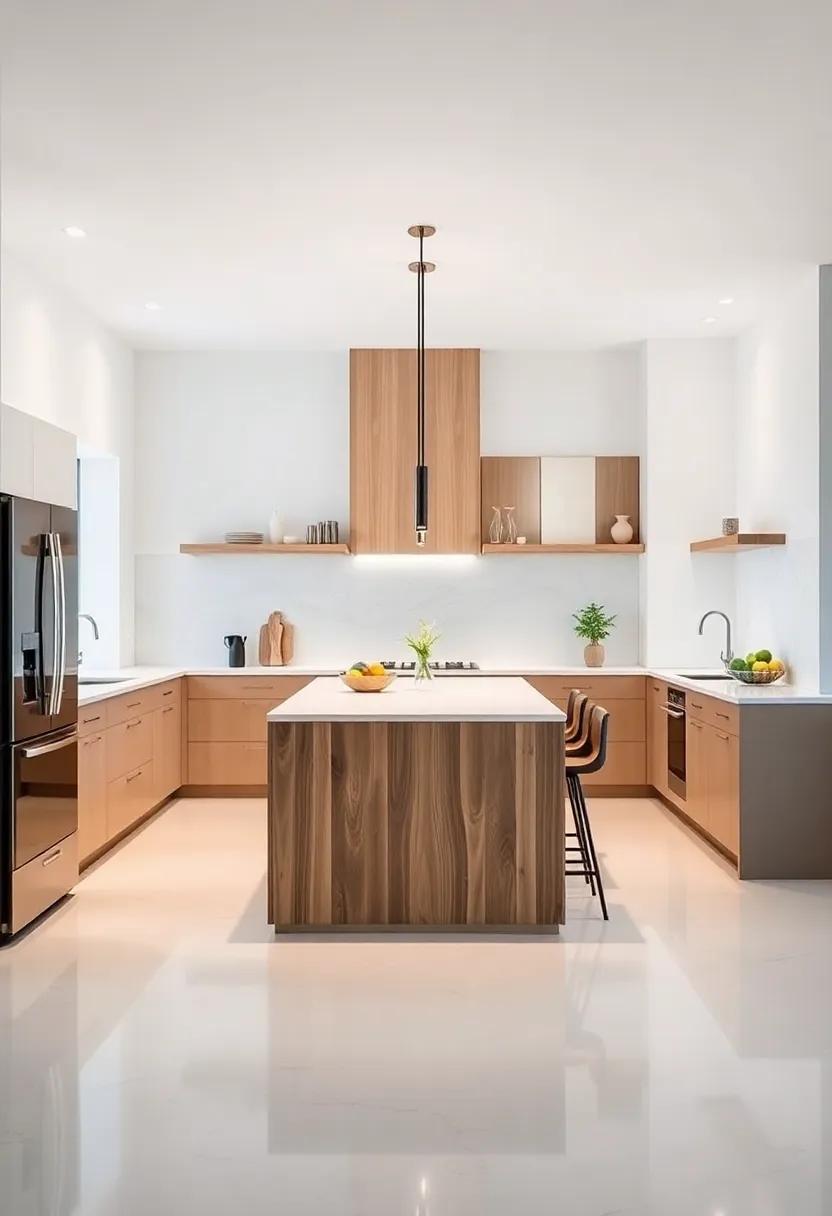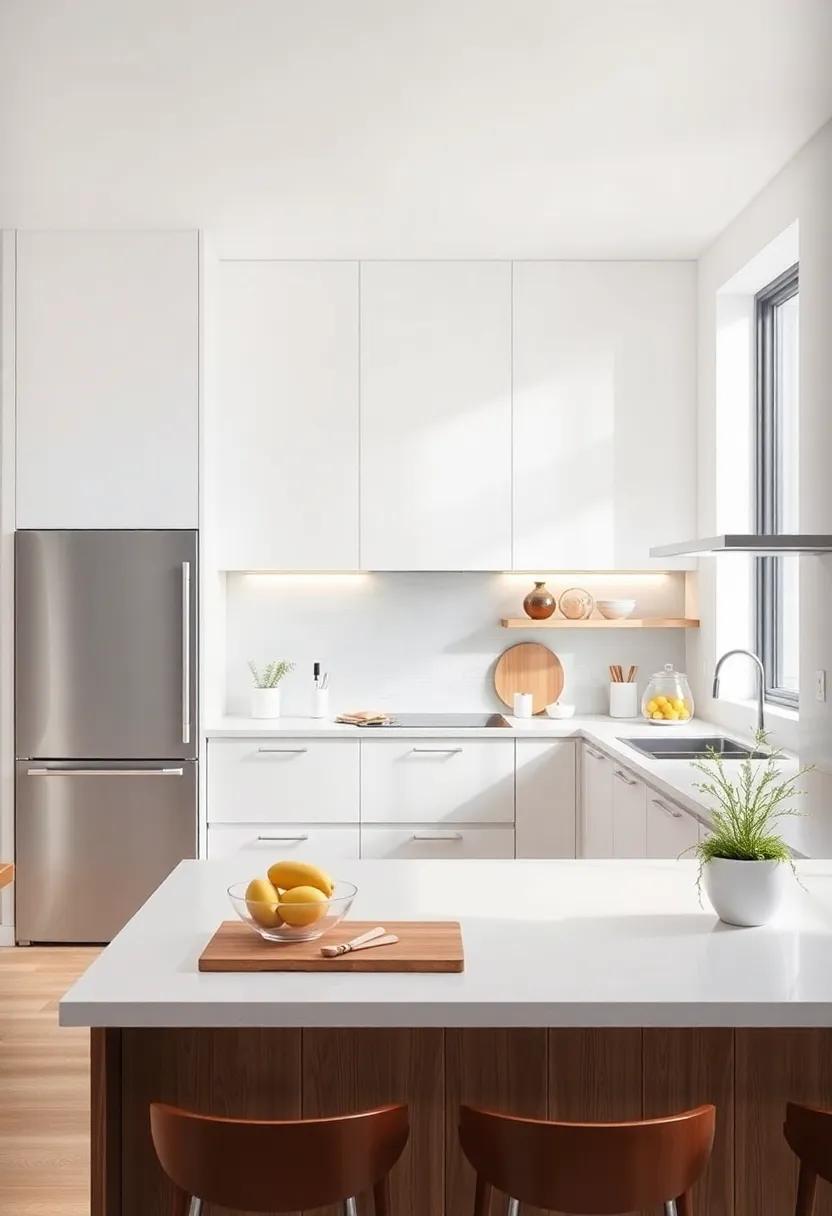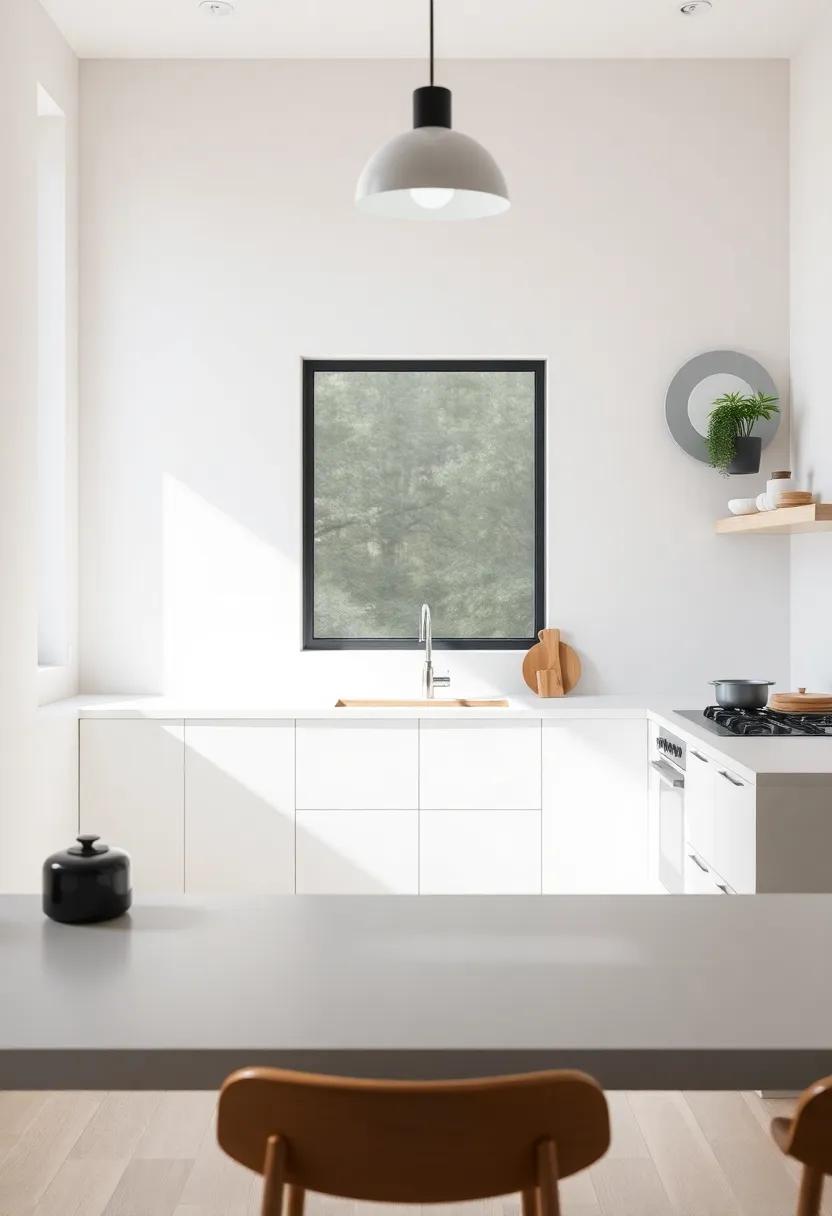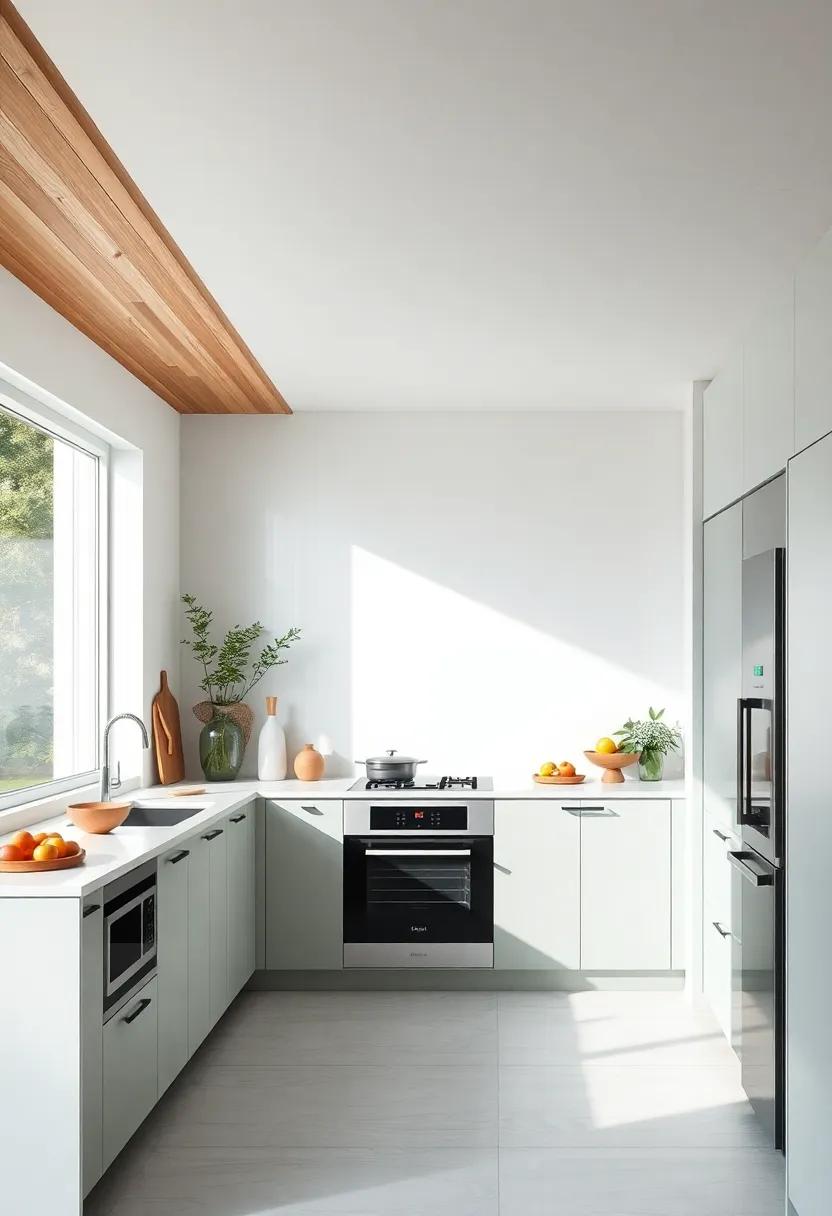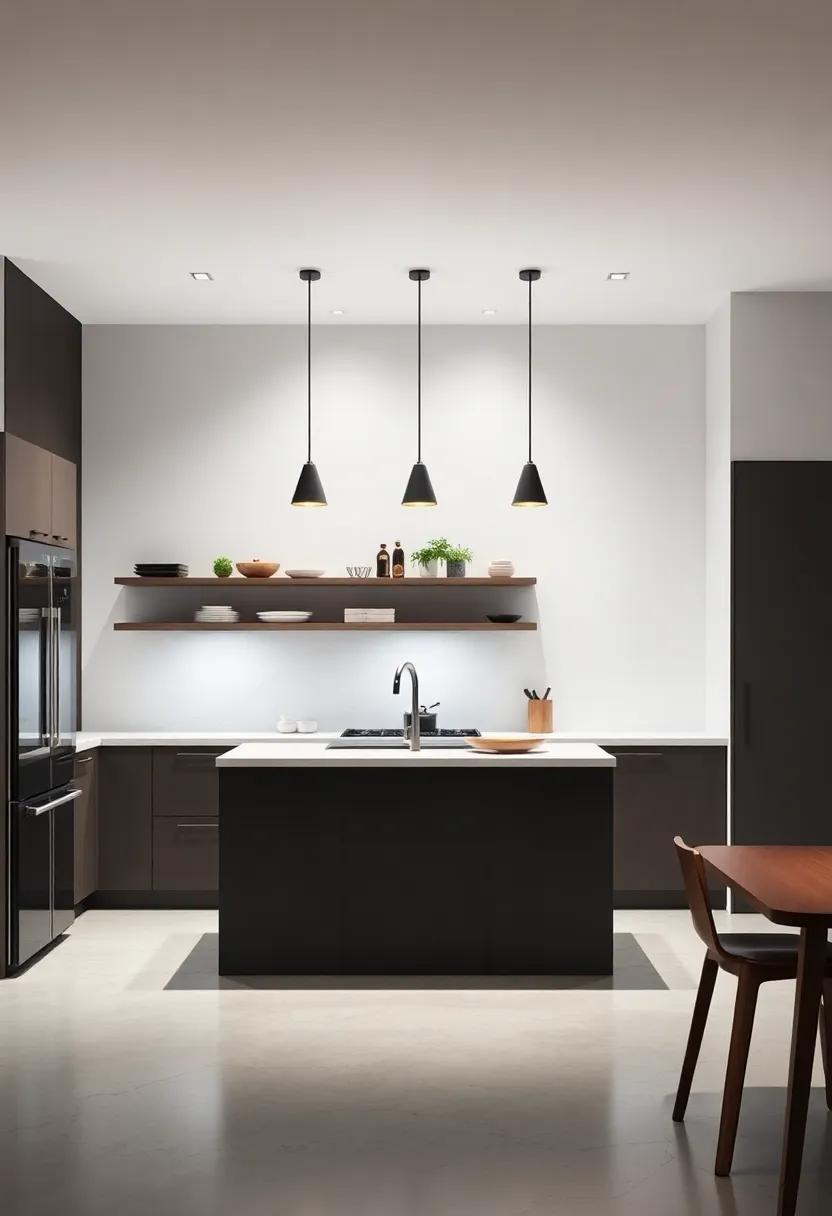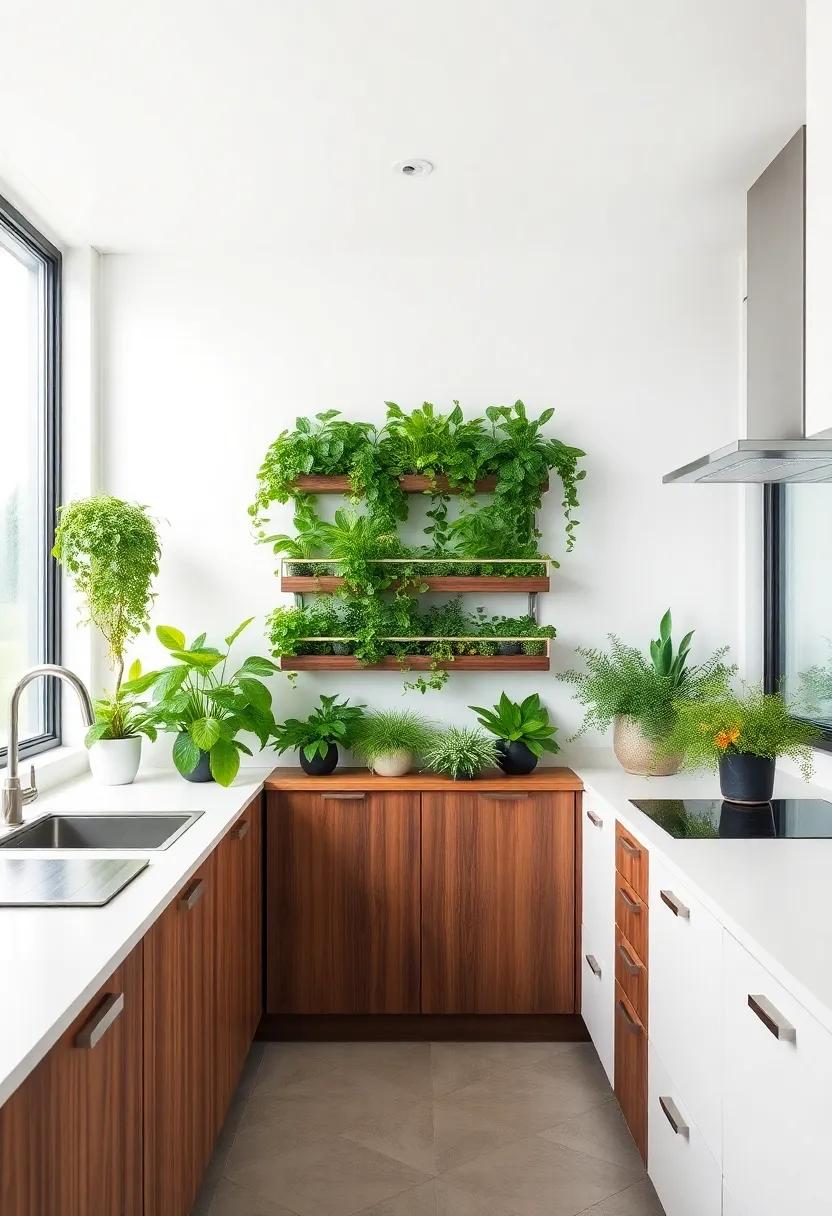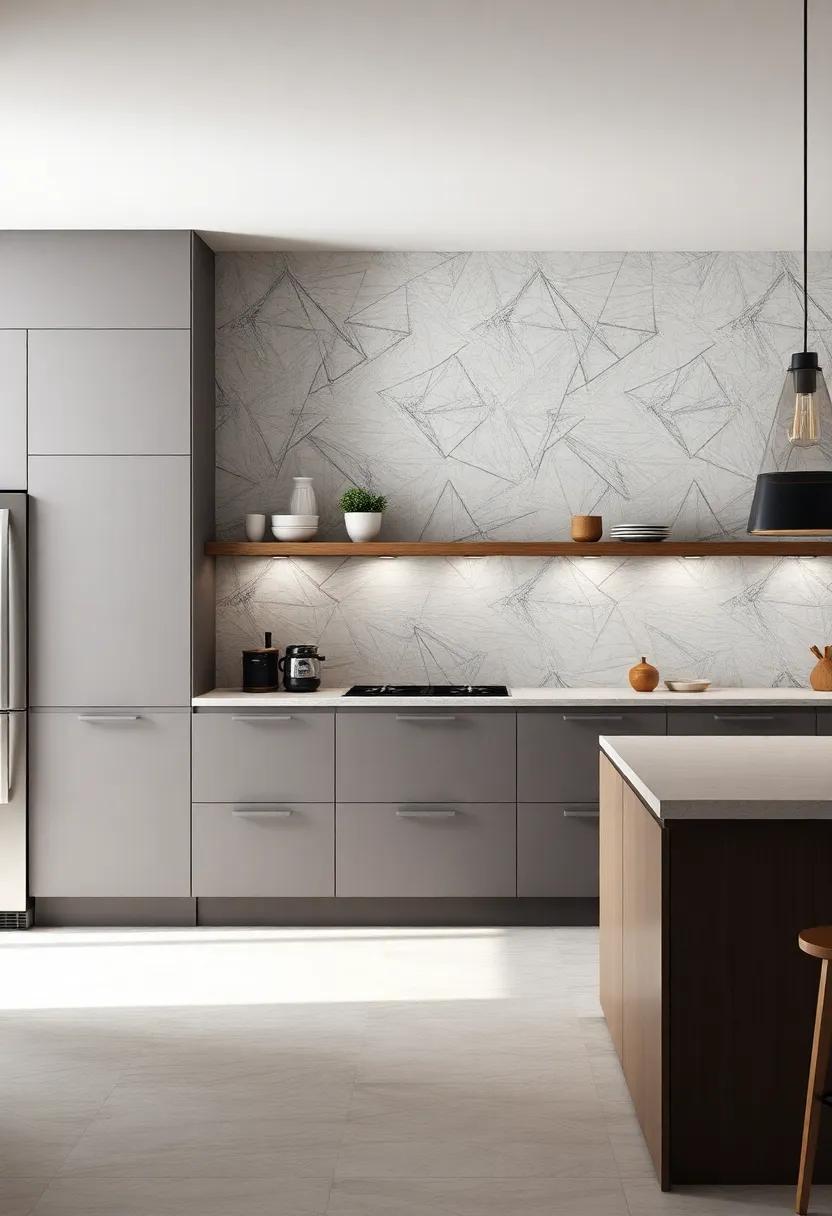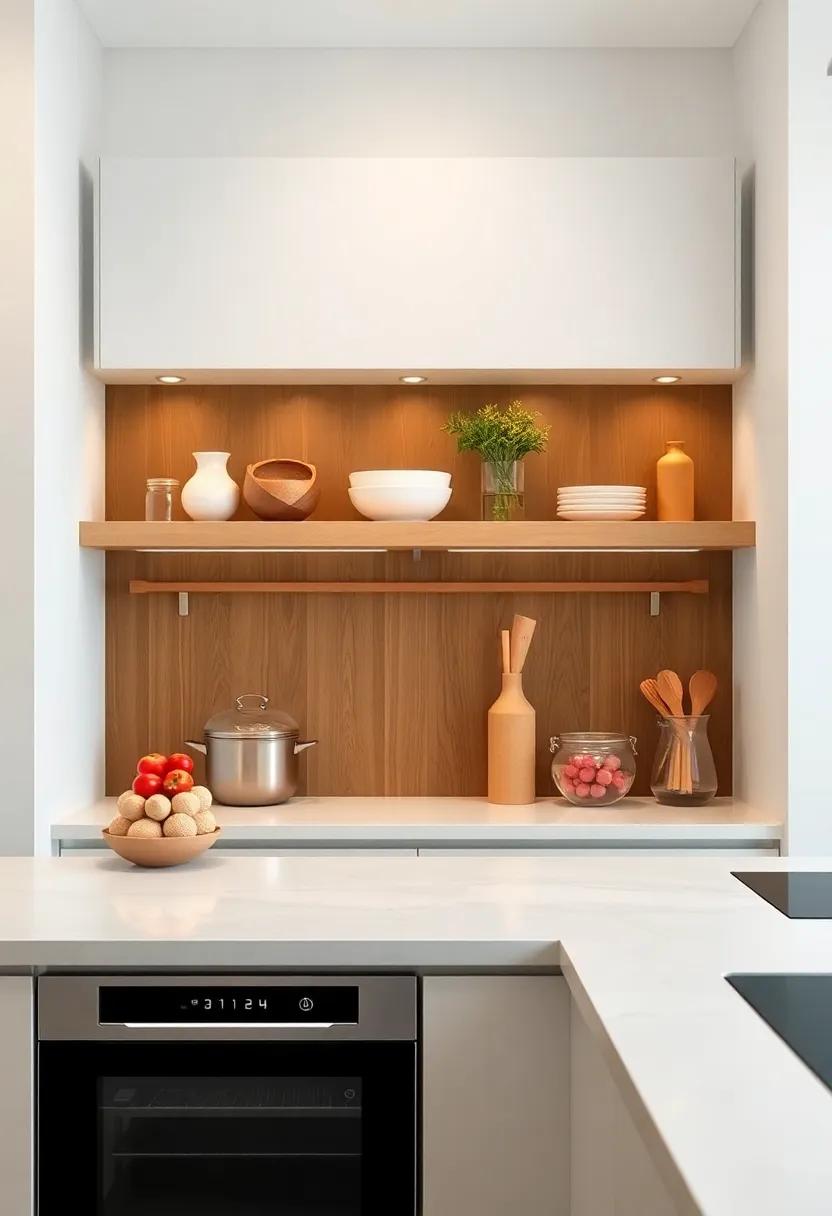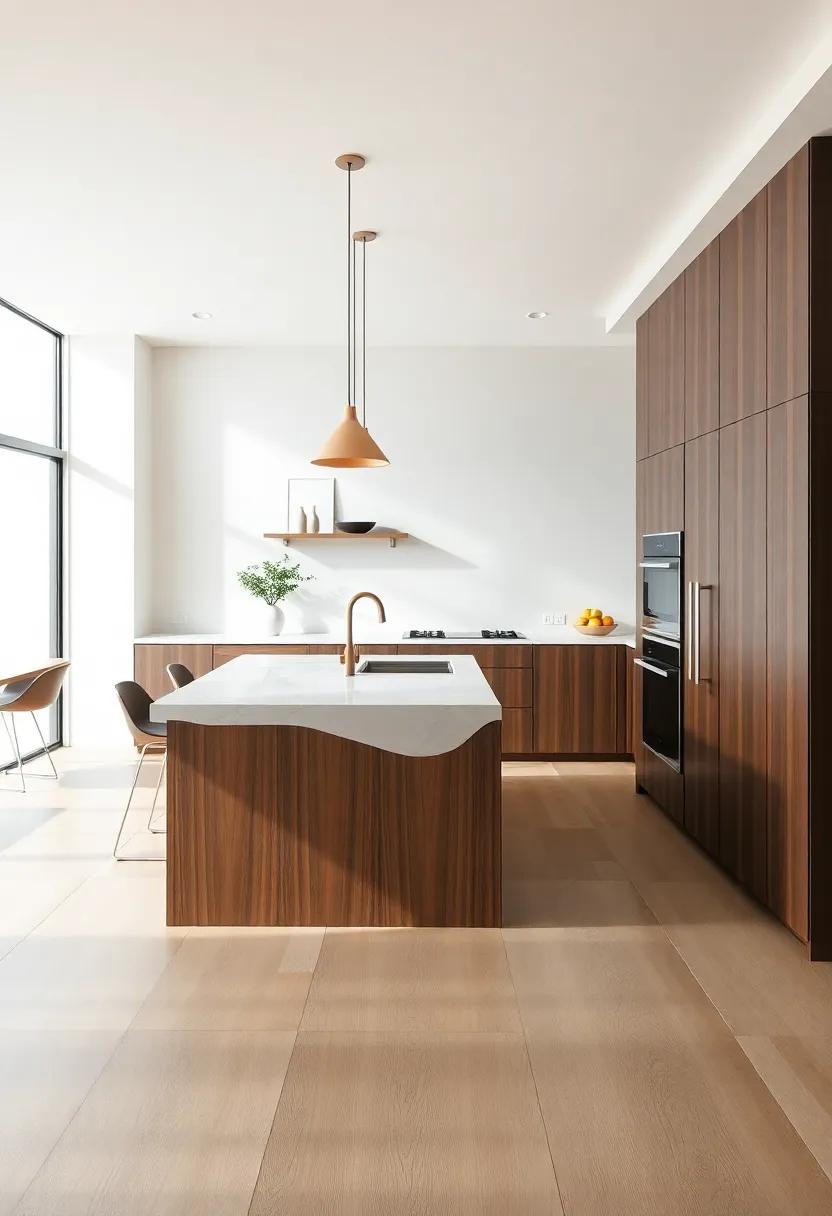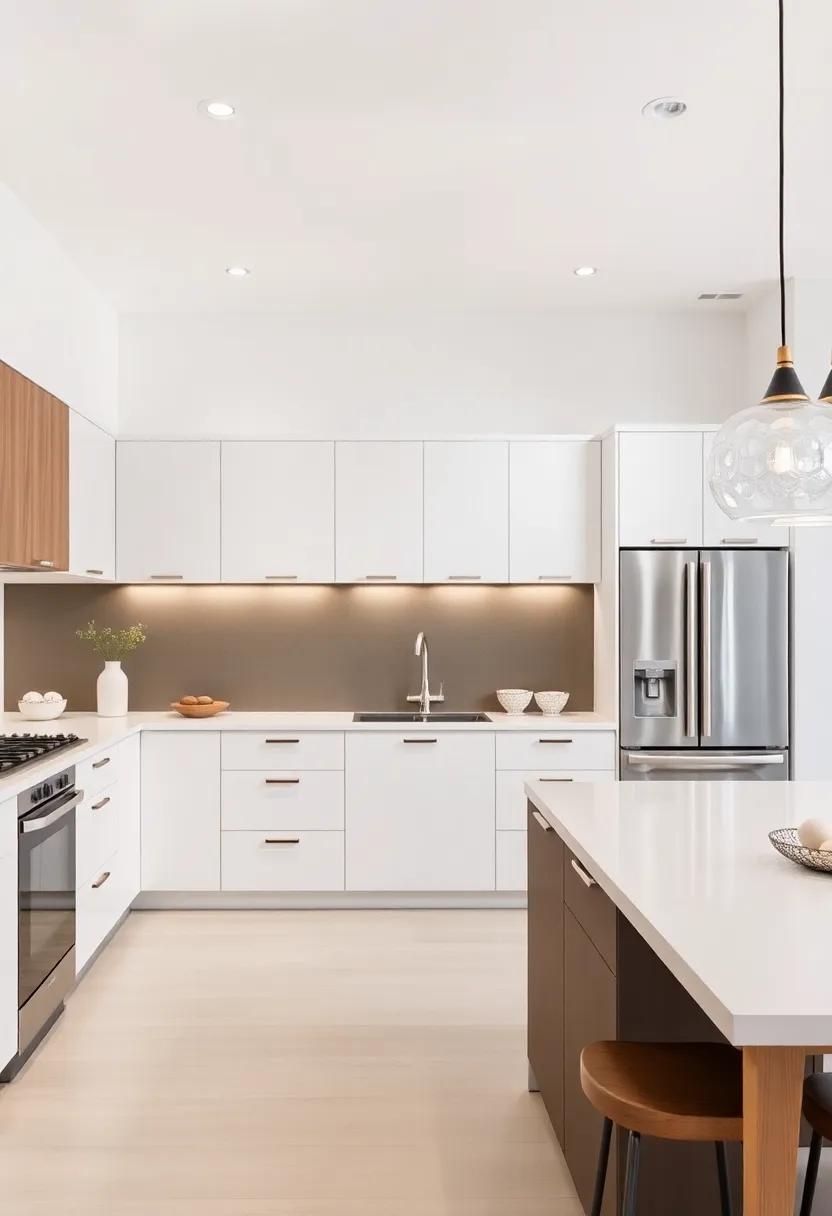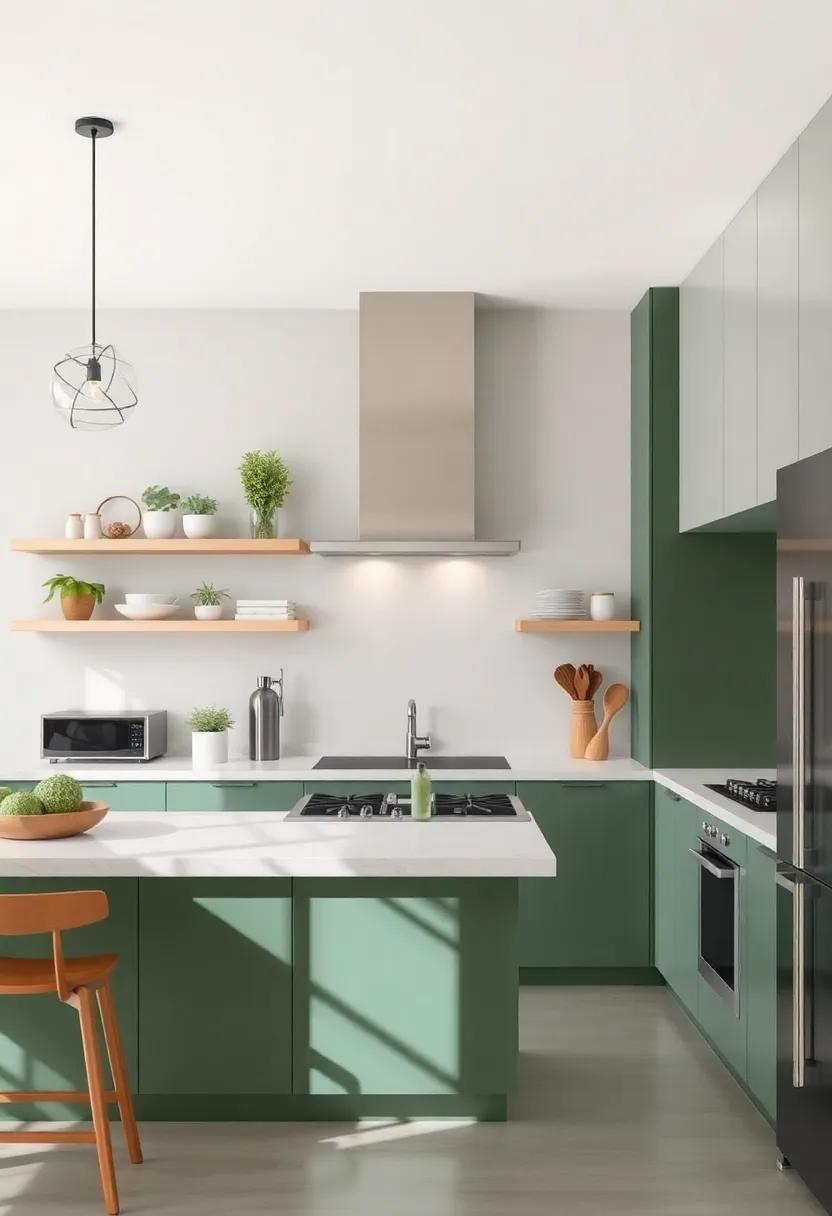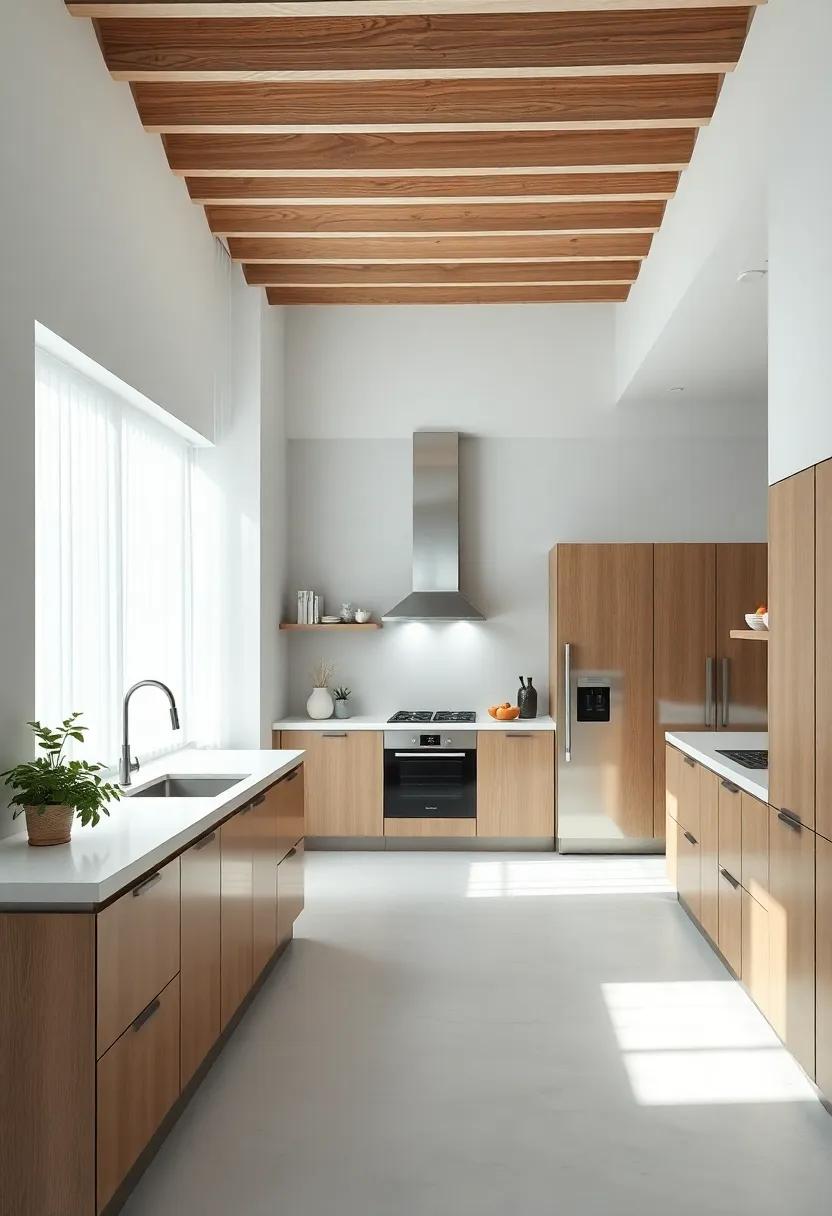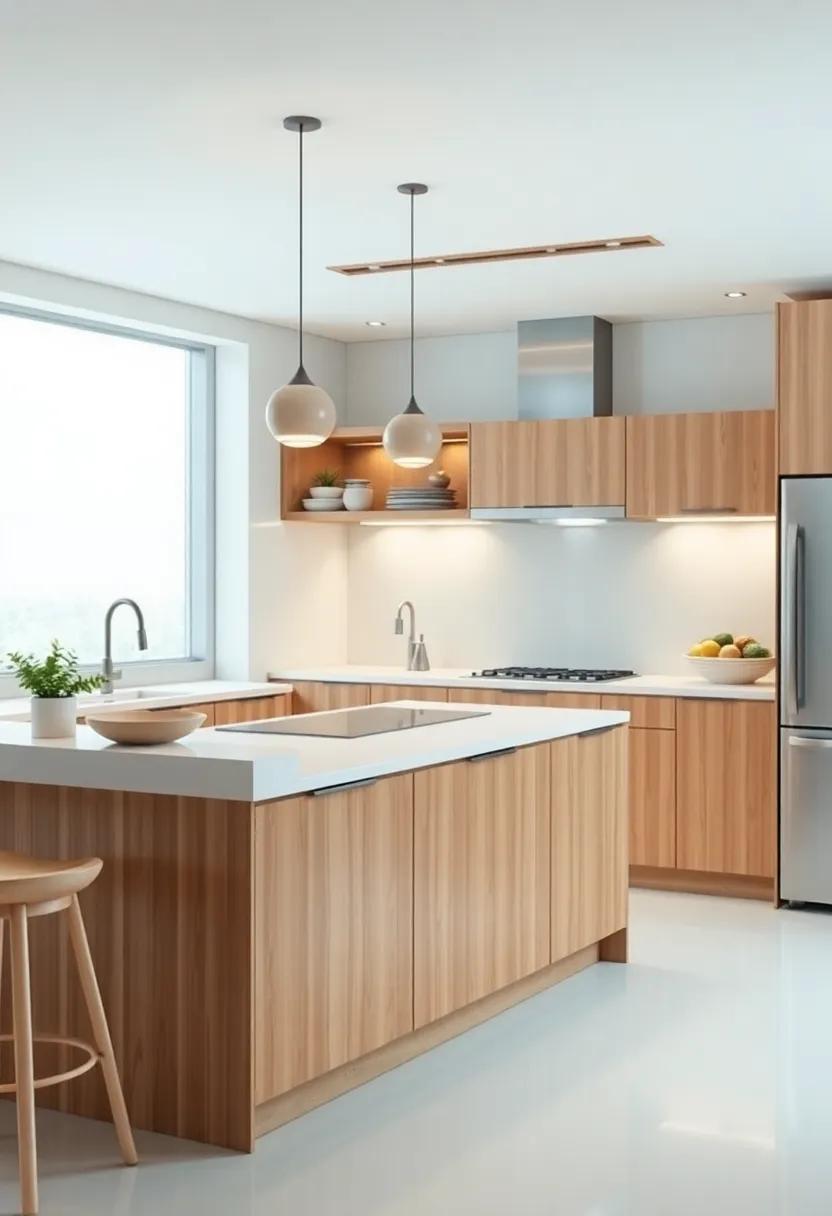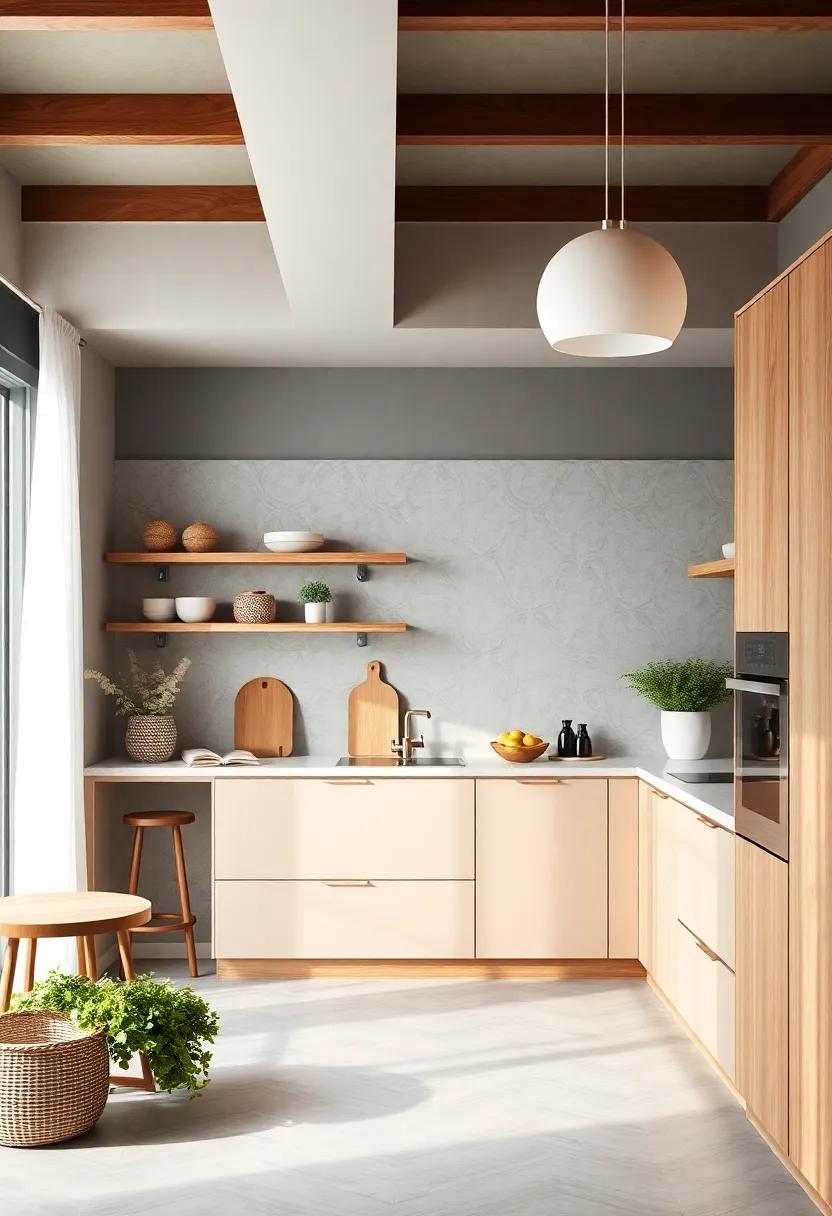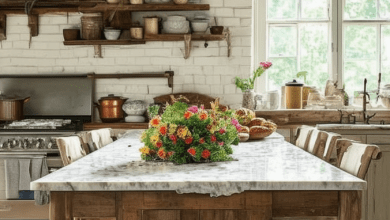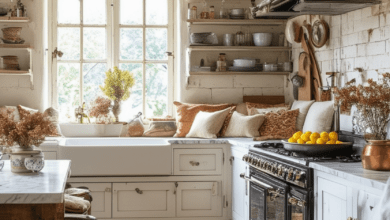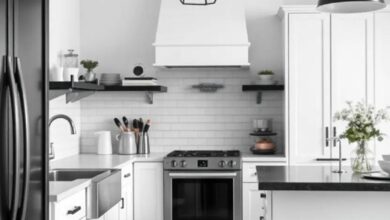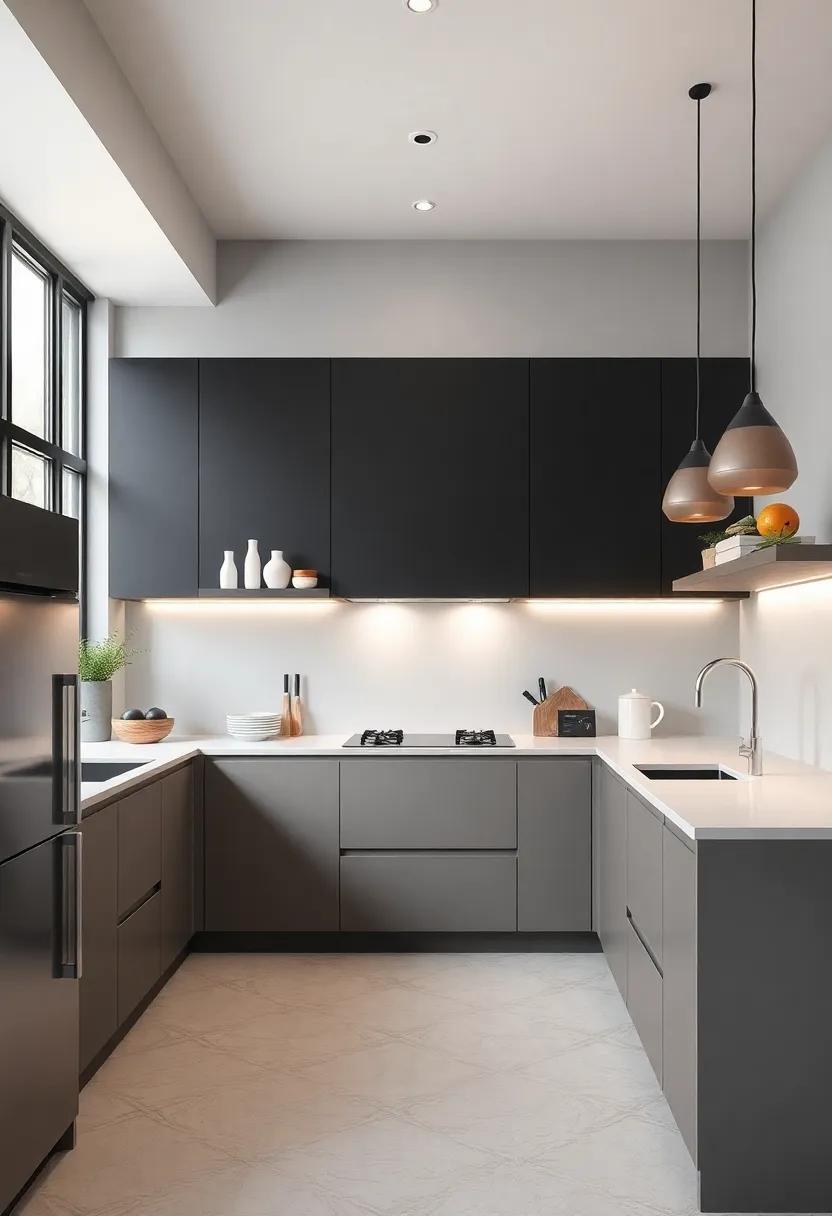
Reimagining Cooking Spaces: Innovative Layouts for the Modern Kitchen
in a world where culinary artistry and functional design intersect, the modern kitchen has emerged as a dynamic hub of creativity and innovation. Gone are the days of mundane layouts and uninspired spaces; today’s cooking environments are a canvas for individuality, reflecting both personal style and practical needs. As we reimagine the very essence of our cooking spaces, we delve into innovative layouts that not only enhance efficiency but also elevate the overall experience of preparing and enjoying food. Whether you’re a seasoned chef or an enthusiastic home cook,discover how thoughtful design can transform the kitchen into a sanctuary of culinary exploration,where inventiveness and functionality blend seamlessly. Join us as we explore the latest trends and concepts that are shaping the kitchens of tomorrow, offering practical solutions and fresh perspectives for all who dare to cook.
reimagining the Heart of the Home with Open Concept Kitchen Designs
Open concept kitchen designs have transformed the conventional notion of cooking spaces, embedding them into the very fabric of the home. These layouts allow natural light to flow freely,fostering an atmosphere that feels spacious and inclusive. By breaking down barriers between the kitchen, dining, and living areas, homeowners are encouraged to embrace interaction and collaboration in their culinary endeavors. The kitchen becomes not just a workspace, but a vibrant hub where family and friends gather, sharing stories and experiences around the heart of the home.
Key elements of open concept kitchen designs include an emphasis on functional layouts that enhance efficiency, coupled with stylish aesthetics that reflect personal taste. Elements such as large islands with seating, integrated appliances, and open shelving promote both usability and accessibility. Considerations for materials and color palettes can create visually cohesive spaces that invite creativity in cooking. The following table highlights popular features that elevate modern open kitchens:
| feature | Description |
|---|---|
| Central Island | Acts as a workspace and gathering spot, ideal for meal prep and socializing. |
| Glass Partitions | Provides separation without sacrificing light and openness, enhancing visual appeal. |
| Integrated Lighting | Enhances ambiance and functionality, with options like pendant lights over the island. |
| Smart Appliances | Makes cooking convenient and efficient, with technology at your fingertips. |
Sculpting Space: Merging Functionality and Aesthetics in Kitchen Layouts
In the quest for the perfect kitchen design, the interplay of aesthetics and functionality is crucial. A well-organized kitchen not only enhances the cooking experience but also transforms the atmosphere of the home. Incorporating open shelving, multifunctional islands, and integrated appliances allows for a seamless blend of beauty and practicality. The use of materials such as natural wood, polished stone, and sleek metals adds a touch of elegance while maintaining durability.Thoughtful attention to color schemes can create a harmonious look, with earth tones promoting warmth and radiant accents igniting creativity.
The layout options available today are as diverse as the needs of the modern cook. From the popular U-shaped kitchens that maximize space to galley layouts that encourage efficiency, each design has its own charm. Consider the following essentials when planning a kitchen that balances aesthetic appeal with utility:
- Workflow Efficiency: Maintain a logical triangle between the sink, stove, and fridge.
- lighting Variability: Utilize ambient, task, and accent lighting to enhance both functions and features.
- Flexible Furnishings: Invest in movable furniture that can adapt to your cooking style or gathering needs.
The Power of zones: Crafting Culinary Areas for Diverse Cooking Activities
Creating distinct culinary zones within your kitchen maximizes efficiency while enhancing the overall cooking experience. By establishing dedicated areas for various cooking activities, you streamline workflows and encourage creativity. consider integrating the following zones:
- Planning Zone: Equipped with cutting boards, knives, and measuring tools.
- Cooking Zone: Featuring your stove, oven, and essential cookware for optimal heat management.
- Serving Zone: A designated space for plating dishes, speedy access to serving utensils, and garnishes.
- Cleaning Zone: Prioritizing easy access to sinks, dishwashers, and storage for cleaning supplies.
Each zone is not only functional but should also reflect your personal style. This can be achieved through thoughtful design choices such as color palettes and materials. You might choose to use versatile islands as both a preparation station and a casual dining area, promoting interaction and flow. to further illustrate the versatility of zoning, here’s a simple layout table:
| Zone | Key features |
|---|---|
| Preparation | Easily accessible tools, ample counter space |
| Cooking | Proximity to stovetops and ovens, well-organized storage |
| Serving | Convenient access to plates and utensils, aesthetically pleasing décor |
| Cleaning | Streamlined sink and dishwasher placement, clutter-free environment |
Embracing Minimalism: Clean Lines and Clutter-Free Cooking Environments
Minimalism in the kitchen encourages a lifestyle that thrives on simplicity and functionality. By focusing on clean lines and clutter-free surfaces, modern kitchens can become both aesthetically pleasing and efficient workspaces. Key features of a minimalist cooking environment include:
- Streamlined cabinetry that blends seamlessly with walls
- Integrated appliances that reduce visual clutter
- Open shelving with a curated selection of essentials
- Neutral color palettes that promote calmness
Adopting a minimalist approach allows for an easier cooking experience, as every tool and ingredient has its designated space. To maximize functionality, consider smart storage solutions such as:
- Pull-out pantries for easy access
- Hidden compartments for storing utensils
- Expandable countertops for additional prep space
- Corner cabinets that utilize every inch
Elevated Experiences: Integrating smart Technology into Modern Kitchens
Modern kitchens are transforming into interactive culinary hubs, where innovation meets functionality. By embracing smart technology, homeowners can elevate their cooking experience to new heights. Imagine controlling your appliances with a simple voice command or using a mobile app to preheat your oven while you organize your shopping list. Smart refrigerators can keep track of your inventory, alerting you when groceries are running low, while intelligent cooktops adjust temperatures based on the specific dish being prepared. These advanced features lead to not only a more efficient cooking environment but also encourage culinary creativity.
Integrating technology seamlessly into kitchen design requires thoughtful planning and consideration of user habits. Here are some key features to highlight in a smart kitchen:
- Automated Lighting: Adjust mood and brightness based on the time of day or task at hand.
- Smart Faucets: Touchless options that dispense water with a simple wave, perfect for hands-free cooking.
- Connected Cooking Devices: Appliances that sync with recipe apps for tailored cooking guidance.
To visualize how these advancements can be structured,consider the following layout options that incorporate smart technology:
| Layout Option | Feature Highlight | Benefit |
|---|---|---|
| Open Concept | Integrated Smart Hub | Seamless interaction between cooking and socializing. |
| Galley Style | Voice-Controlled Appliances | Easier multitasking in limited space. |
| Peninsula Design | Smart Inventory Management | Efficient meal planning and grocery shopping. |
Eco-Friendly Innovations: Sustainable Materials and Layouts for the Future
In the quest for sustainable living, modern kitchens are being transformed into eco-friendly havens that champion functionality and environmental consciousness. Reclaimed wood countertops,bamboo cabinetry,and recycled glass backsplashes not only infuse design with warmth but also substantially reduce the carbon footprint across various stages of production. Utilizing these materials, homeowners are encouraged to embrace DIY projects, allowing them to create personalized cooking spaces that emphasize sustainability without compromising style. The open-concept layout is gaining traction, as it promotes airflow and eliminates the need for needless heating or cooling, thereby enhancing energy efficiency.
Designers are now leveraging innovative layouts to maximize utility while minimizing waste. Incorporating modular furniture enables flexibility, as pieces can be moved or repurposed based on the cooking habits and preferences of the users. Additionally, smart storage solutions such as concealed compost bins and pull-out racks make it easier for homeowners to maintain institution and encourage responsible waste management. The following table presents some innovative materials alongside their eco-friendly attributes:
| Material | Eco-Friendly Attribute |
|---|---|
| Reclaimed Wood | Reduces new timber use; carbon sequestration |
| Bamboo | Fast-growing, renewable resource; minimal pesticides |
| Recycled Glass | Diverts waste from landfills; lowers energy consumption in production |
| Cork | Harvested without harming trees; biodegradable |
dynamic seating Solutions: Blending Dining and Cooking Spaces Seamlessly
Dynamic seating solutions are revolutionizing how we interact with our kitchens by effectively merging the kitchen and dining experience into a single, fluid space. Imagine a multifunctional island that serves not only as a cooking surface, but also as a gathering point for friends and family. The integration of stools, benches, and even mobile carts allows for flexible seating arrangements that adapt to various occasions, from casual breakfasts to elegant dinner parties.Key elements that contribute to this seamless blend include:
- Convertible furniture: Pieces that transition between dining and cooking use.
- Open layouts: Encourage movement and social interaction.
- Integrated technology: Smart appliances that complement the dining experience.
Moreover, the aesthetic of these dynamic seating solutions can elevate kitchen design. Utilizing materials that balance style with functionality—such as natural wood, sleek metals, and durable fabrics—can create a cohesive look that unifies the cooking and dining areas. Considerations for geometry and flow are critical; such as, a curved island can invite conversation, while strategically placed ambient lighting sets the mood for both cooking and dining. Here’s a quick comparison of popular seating options:
| Seating Option | Key Feature | Space Efficiency |
|---|---|---|
| bar Stools | Compact and easily storable | High |
| Benches | Accommodates more people | Moderate |
| Mobile Carts | Versatile and space-saving | Very High |
Color Palettes and Lighting: Setting the Mood for Culinary Creativity
To truly elevate culinary spaces, the choice of color palettes and lighting can play pivotal roles in inspiring creativity and fostering a pleasant atmosphere. Thoughtful combinations of hues encourage different emotions and actions in the kitchen, which can significantly enhance your cooking experience. Consider implementing a warm color palette comprised of soft yellows, oranges, and gentle reds to evoke warmth and stimulate appetite. In contrast, cool palettes featuring soft blues and greens can create a serene cooking environment, helping to reduce stress during meal preparation. Pair these colors with various lighting techniques, such as pendant lights, under-cabinet lighting, or task lights, to highlight key areas and provide functional illumination where it’s needed most.
When it comes to lighting, it’s essential to layer different sources to create depth and ambiance. Ambient lighting serves as the foundation, while accent lighting emphasizes specific design features or culinary tools. Some effective combinations include:
- Natural Light: Maximize window space to bring in daylight.
- Adjustable Spotlights: Focus on artwork or special shelving.
- Warm LED Bulbs: Add a cozy glow to different work areas.
Utilizing these elements can transform your kitchen into a dynamic, versatile space that encourages culinary experimentation and joyful gathering. Below is a simple table outlining potential colors and their associated moods:
| Color | Mood |
|---|---|
| Yellow | Cheerful & Inviting |
| Blue | Calm & Relaxing |
| Orange | Energetic & Stimulating |
| Green | Fresh & Rejuvenating |
Artistry in Appliances: Combining Style and Efficiency in kitchen Design
In the quest for culinary excellence, the modern kitchen transcends its mere functional purpose, evolving into a canvas where aesthetics and efficiency harmoniously intertwine. The latest innovations in kitchen design showcase appliances that boast sleek lines, vibrant finishes, and cutting-edge technology, engaging the senses while promoting seamless cooking experiences. Creative layouts, such as open-concept spaces, effectively integrate the essence of the kitchen with dining and living areas, transforming it into a multifunctional hub while ensuring that style is never compromised.
today’s appliances not only focus on practicality but also serve as statement pieces that enhance the overall ambiance of the kitchen. Consider the following elements that exemplify artistry in kitchen design:
- Integrated Appliances: Seamlessly blending into cabinetry.
- Smart Tech: Appliances that adapt to your cooking style.
- Bold Color Choices: Bringing personality into the space.
- Textured Finishes: Adding depth through various materials.
These design choices invite creativity and expression, ultimately crafting a culinary sanctuary where meal preparation feels as delightful as dining itself.
Creative Storage Solutions: Maximizing Space with Custom Cabinets
In the quest for harmonious cooking spaces, custom cabinets serve as the unsung hero of efficient design. Enable your kitchen’s full potential by incorporating cabinets that cater specifically to your needs. Think beyond mere functionality to embrace aesthetic appeal that resonates with your style. With options like pull-out spice racks, vertical dividers for baking trays, and under-counter drawers for pots and pans, the cabinetry can transform your cooking experience. Consider integrating features such as:
- Hidden compartments for gadgets
- Adjustable shelves to accommodate varying heights
- Built-in lighting that highlights each section
To maximize space effectively, take advantage of the vertical dimensions of your kitchen. Floor-to-ceiling cabinets can not only provide more storage but also create the illusion of a larger area. Pairing this with a smart organizational system allows you to maintain a clutter-free environment, which is essential for a seamless cooking experience. The table below outlines some creative cabinet styles that can enhance both functionality and style:
| Cabinet Style | Benefits |
|---|---|
| Corner Cabinets | Maximizes hard-to-reach areas |
| Glass-Front cabinets | Adds an airy feel and showcases dishware |
| Open Shelving | Creates a casual vibe; perfect for displaying items |
The Island Advantage: Centralizing Preparation and Social Interaction
Embracing a centralized cooking island transforms the culinary experience, creating an intuitive space that encourages both preparation and social engagement. The island serves as a hub, allowing multiple cooks to work concurrently without chaos. Features like integrated appliances and multifunctional storage can be seamlessly incorporated to keep everything within arm’s reach. Moreover, incorporating a sink or cooktop into the island design keeps the workspace fluid, offering a chance for conversation and connection while meal prep occurs. This environment naturally fosters a sense of community, inviting family and friends to gather and participate in the cooking process.
Another noteworthy advantage of a well-structured kitchen island is the versatility it provides for social interactions. Not only does it function as a culinary workspace, but it can also double as an informal dining area or a casual gathering spot. Consider implementing the following elements to enhance the social aspect:
- Barstools or Seating: Create a welcoming atmosphere with cozy seating options that invite guests to linger.
- Open Layout: Ensure an unobstructed flow into adjacent areas, encouraging easy conversing and movement.
- Ambient Lighting: Use pendant lights to create a warm, inviting ambiance that sets the tone for gatherings.
Flow and movement: Designing Kitchens for Efficient Culinary Mastery
Designing a kitchen that enhances efficiency goes beyond mere aesthetics; it is about creating a functional environment where movement and workflow are seamless. A well-planned kitchen layout revolves around the kitchen work triangle,which optimizes the locations of the sink,stove,and refrigerator. This triangle should be unobstructed by obstacles,promoting an uninterrupted flow between essential cooking areas. Consider the addition of a central island that not only provides extra counter space but also acts as a gathering point, allowing for multiple cooks to collaborate or for family members to engage in the cooking process. Strategically placing tools and appliances in close proximity to their respective zones can further streamline kitchen tasks.
Innovative layouts can also introduce elements that cater to different cooking styles and preferences. For instance, the inclusion of open shelving can encourage easy access to frequently used items, fostering a more organized space while displaying visually appealing cookware. The use of pull-out cabinetry enhances accessibility, enabling quick storage and retrieval of essentials. Moreover, technology can be integrated to maximize functionality—consider smart appliances that harmonize with your layout, allowing for smoother navigation and smarter meal prep. with these elements combined, kitchens can transcend traditional designs and evolve into dynamic, efficient spaces where culinary mastery thrives.
culinary Corners: Designing Nooks for Cozy Cooking Moments
Consider the potential of a nook that transforms the mundane task of cooking into a cherished experience. Imagine a window-side bench,where you can savor the changing seasons while prepping meals. This nook can be equipped with a small herb garden, allowing fresh ingredients to be within arm’s reach.Pair that with a quaint shelf displaying your collection of cookbooks and spices; this thoughtful layout promotes functionality while inviting creativity in the kitchen. A well-placed backlit wall shelf can also add warmth and ambiance, illuminating your culinary masterpieces as you experiment with new recipes.
For those who seek collaboration in the kitchen, consider a multi-functional island that acts as both a preparation area and a social hub.this space can feature built-in seating, creating a welcoming environment for family and friends to gather. Integrate soft-close drawers and hidden storage solutions to keep the area tidy, preserving the cozy atmosphere. An effective layout not only enhances efficiency but fosters a sense of community. As you design your kitchen, think about adding small details like personalized décor and mood lighting to encapsulate the spirit of joyous cooking.
Transitional Spaces: Connecting Indoor and Outdoor Cooking Experiences
The seamless blend of indoor and outdoor cooking spaces transforms the culinary experience, allowing creativity to flourish while connecting with nature. by incorporating large sliding glass doors, open layouts, and shared surfaces, homeowners can create a harmonious flow between the kitchen and outdoor areas. Imagine preparing a meal while enjoying the sights and sounds of your garden, or effortlessly passing dishes through a pass-through window to be served on a patio. This integration not only enhances the aesthetic appeal but also promotes social interaction and engagement during meal preparation.
To elevate your transitional cooking space, consider the following design elements that create a cohesive experience:
- Expandable countertops: Extend your kitchen island to serve both indoors and outdoors.
- Complementary color palettes: Use similar hues to unify indoor and outdoor aesthetics.
- Integrated storage solutions: Design cabinetry that accommodates outdoor cooking tools and supplies.
- Outdoor appliances: Include grills, pizza ovens, or beverage centers that align with indoor functionality.
Here’s a simple comparison table to illustrate the advantages of each space:
| Aspect | Indoor Cooking | Outdoor Cooking |
|---|---|---|
| Weather Protection | Yes | No |
| Social Atmosphere | Moderate | High |
| Natural Elements | Limited | Abundant |
| Cooking Methods | Versatile | Grilling Focused |
This thoughtful integration of spaces not only modernizes cooking layouts but also redefines how we experience food preparation and dining, turning each meal into an occasion that celebrates both ambiance and flavor.
The Rise of the Chef’s Kitchen: Designing for Passionate Home Cooks
the contemporary kitchen has transformed into a vibrant hub for passionate home cooks, reflecting both functionality and creativity. Open-concept designs have gained popularity, allowing for seamless interaction between the cooking space and living areas. By incorporating large kitchen islands, chefs can easily prep meals while engaging with family and friends. To enhance the experience, consider including features such as:
- Ample counter space for food preparation.
- Smart storage solutions like pull-out shelves and deep drawers.
- High-quality appliances that cater to diverse cooking styles.
Furthermore, the application of zoning techniques in kitchen layouts effectively addresses the rise of culinary passion. By creating designated areas for various activities—such as cooking, baking, and entertaining—home cooks can organize their workflows and optimize efficiency. Consider designing a baking station, complete with a marble countertop for easy rolling of dough, and a dedicated spice rack nearby. Creating these specialized zones not only fosters creativity but also allows for personalization based on individual cooking preferences. This thoughtful approach helps transform the kitchen into a space that inspires culinary exploration.
Herb Gardens and Vertical Planting: Integrating Nature into Kitchen Spaces
Incorporating herb gardens and vertical planting into kitchen spaces not only enhances the aesthetic appeal but also promotes a sustainable lifestyle. Imagine the fragrant aroma of fresh basil or mint wafting through while you prepare your meals. Utilizing wall-mounted planters or tiered shelves can transform any unused corner into a lush green oasis. This not only maximizes space but also provides easy access to an array of culinary herbs right at your fingertips. The integration of natural elements within the kitchen encourages a more immersive cooking experience, connecting you directly to the ingredients you use.
Creating your own herb garden can be as simple as using repurposed containers or chic terracotta pots that complement your kitchen’s design.Consider the following suggestions for effective vertical planting:
- Use Small Planters: Install small planters on walls to freely grow herbs like thyme, cilantro, and chives.
- hang Vertical gardens: Opt for hanging systems that allow for efficient drainage and sunlight exposure.
- Mix and Match: Combine herbs with decorative plants for added color and texture.
To streamline the selection of plants and ensure the best growth,consider the following table:
| Herb | Sun Requirements | Watering Frequency |
|---|---|---|
| Basil | Full Sun | Every 2-3 days |
| Mint | Partial Sun | weekly |
| Cilantro | Full Sun | Every 5-7 days |
Mixing Materials: Textured Surfaces for a Modern Kitchen Aesthetic
In the quest for a contemporary kitchen aesthetic,the combination of different materials can transform the cooking space into a stylish culinary haven. Imagine a seamless blend of sleek metals, natural woods, and vibrant ceramics working together to create a visual feast. Textured surfaces play a pivotal role; they add depth and intrigue while fostering a sense of warmth and comfort.As an example, consider pairing matte-finish cabinets with polished stone countertops, or mixing reclaimed wood shelves with stainless steel appliances. These combinations not only elevate the design but also infuse character and personality into the space.
Color harmony and the tactile experience should guide material selection. Opt for soft hues that resonate with personal style while ensuring cohesion throughout the design. Here are some pairings to consider:
- Whitewashed wood with bold, colored tiles
- Concrete surfaces paired with brass accents
- Textured glass backsplashes with dark cabinetry
Furthermore, introducing a variety of finishes can invigorate the overall look. Glossy,reflective surfaces can make smaller kitchens feel larger,while textured materials evoke a sense of cozy sophistication. By consciously mixing elements, the modern kitchen becomes not just a space for cooking, but a curated environment that resonates with the lives within it.
Artful Display Areas: Showcasing Cookware and Ingredients Creatively
Transform your kitchen from a purely functional space into an artistic haven by incorporating display areas that highlight your cookware and ingredients. Open shelving can beautifully showcase a curated collection of pots, pans, and artisan kitchen tools, drawing the eye upward and enhancing the room’s aesthetic. By arranging these items in a thoughtful manner, you create an engaging focal point. Consider displaying ingredients such as colorful spices, grains, and oils in clear, labeled jars. This not only elevates their visual appeal but also encourages a sense of culinary creativity.
Another innovative approach is to incorporate a vertical garden into your cooking environment. Utilize wall-mounted planters to grow fresh herbs and greens, combining the beauty of nature with functionality. This not only provides easy access to fresh ingredients while cooking but also adds a pop of green that livens up your space. Consider creating themed spaces, such as a dedicated baking corner with stylish bakeware and ingredients, or a Mediterranean-inspired nook with terracotta pots filled with olive oil and herbs. By layering textures and colors through these unique display areas, you invite a sense of artistry and inspiration into your daily cooking routine.
Transformative Islands: Utilizing multi-Functional Features for Versatility
In the quest for modern kitchen efficiency, the role of transformative islands has become increasingly pivotal. These versatile hubs can serve multiple purposes,seamlessly combining functionality with style. A well-designed island can transform into a culinary command center, offering ample counter space for meal prep while also serving as a casual dining area.
Consider incorporating features that enhance usability and encourage interaction within your cooking space. Here are some innovative ideas:
- Storage Solutions: Built-in shelves and drawers can keep utensils organized and within reach.
- Integrated Appliances: Cooktops,microwaves,or wine coolers integrated into the island facilitate effortless cooking and entertaining.
- Expanded Seating: Overhangs or bar-style seating provide informal dining options for family and friends.
| Feature | Benefit |
|---|---|
| Recessed Lighting | Enhances ambiance while spotlighting culinary activities. |
| Smart Technology | Allows for hands-free cooking and recipe management. |
| Water Sink | Increases efficiency for food prep and cleanup. |
Visual Focal Points: Statement Light Fixtures that Elevate Kitchen Design
In the quest for a kitchen that marries functionality and aesthetics, statement light fixtures play a crucial role in crafting an inviting atmosphere. these standout elements not only illuminate cooking spaces but also serve as stunning design features that anchor the overall look. Imagine a sleek island pendant light shimmering above your prep area, casting a warm glow that enhances both cooking and socializing. Choosing the right fixture can add a layer of sophistication,with styles ranging from industrial metal to delicate chandeliers,ensuring your culinary haven reflects your personal aesthetic.
Beyond mere functionality, these light fixtures can accentuate the unique architectural features of your kitchen. Consider the following factors when selecting the ideal lighting:
- scale: Match fixture size to room proportions for a balanced look.
- Style: Harmonize with cabinetry and hardware to create a cohesive design.
- Color Temperature: Opt for warm tones to foster a cozy ambiance.
- Adjustability: Choose fixtures that allow for brightness control to accommodate different tasks.
| Fixture type | Style | ideal Placement |
|---|---|---|
| Pendant Lights | Modern,Rustic | above islands or dining tables |
| Chandeliers | Elegant,Contemporary | Centrally in open kitchens |
| Wall Sconces | Classic,Industrial | On side walls for accent lighting |
Sustainable Style: Incorporating Green Design elements in Kitchen Spaces
Embracing eco-friendly elements in kitchen design not only promotes sustainability but also enhances the aesthetic appeal of the space. When reimagining cooking areas, consider incorporating natural materials such as bamboo cabinetry and recycled glass countertops. These materials not only reduce environmental impact but also add a unique touch of warmth and character to the kitchen. Additionally, maximizing natural light through strategically placed windows or skylights can definitely help reduce reliance on artificial lighting, creating an inviting atmosphere while saving energy.
Integrating energy-efficient appliances is another crucial aspect of a sustainable kitchen. Opt for models that boast high energy ratings, which consume less power and water without compromising performance. Moreover, implementing a vertical garden or herb wall not only provides fresh ingredients at your fingertips but also improves indoor air quality. To encapsulate these design elements, consider the following table that highlights key features of a sustainable kitchen:
| Element | Benefits |
|---|---|
| Natural Materials | Reduces carbon footprint, adds warmth |
| Energy-Efficient Appliances | Lower energy bills, eco-friendly |
| Natural light | Enhances mood, reduces energy consumption |
| Herb Garden | Fresh produce, improved air quality |
Family Engagement: Designing Kitchens to Foster Togetherness and Bonding
In the heart of every home, the kitchen stands as a canvas for creativity and connection. To encourage family engagement, designing multipurpose layouts can transform this essential space into a hub for togetherness. Consider these elements to promote bonding while cooking:
- Open-Concept Design: Blurring the lines between kitchen and living spaces allows for seamless interaction.
- Central Islands: A spacious island can serve not just for food preparation but also as a gathering spot for casual conversations.
- Seating Arrangements: Incorporating bar stools or a cozy breakfast nook encourages informal family meals and relaxed gatherings.
Moreover, designing zones for collaboration can enhance the cooking experience, making it more enjoyable for everyone involved.By segmenting areas for food prep, cooking, and dining, families can engage in various activities without overcrowding the space. Consider implementing:
| Zone | Purpose |
|---|---|
| Prep Area | Chop and mix ingredients together. |
| Cooking Zone | Encourage teamwork in meal preparation. |
| Dine Space | Gather around for sharing stories and meals. |
The Future of Cooking: Anticipating Trends in Kitchen Layouts
The landscape of home cooking continues to evolve, reflecting broader societal shifts and innovations in technology. The open-concept kitchen has gained immense popularity,further blurring the lines between cooking and socializing. As families seek more inclusive experiences, layouts are likely to incorporate multi-functional islands that serve as both a prep area and a casual dining space. This configuration not only encourages interaction but also allows for a seamless flow between cooking,dining,and entertaining. As such, expect to see more kitchens designed with flexible zones that can be adapted for different activities, from culinary creations to homework sessions with the kids.
Additionally,the incorporation of advanced technology is set to redefine kitchen layouts drastically. Smart appliances that integrate with home automation systems will promote more efficient workflows. As these gadgets become more intuitive, kitchens will feature more configurable spaces, allowing users to reallocate areas based on the task at hand. Future designs may also incorporate vertical storage solutions,maximizing space efficiency while minimizing clutter. With increasing awareness of sustainability, kitchens will likely adopt eco-friendly materials and smart energy solutions. This holistic approach not only maximizes functionality but also encourages a healthier, more sustainable lifestyle.
A culinary Muse: Inspiring Design Elements that Spark Creativity and Joy
In the heart of every home lies the kitchen,a sanctuary where culinary dreams come to life. A design that embraces open spaces not only promotes creativity but also encourages social interaction, transforming meal preparation into a communal experience.Consider integrating elements that reflect your personal style while enhancing functionality. Features such as multi-functional islands, hanging herb gardens, and smart storage solutions allow for flexibility in cooking and entertaining. Incorporating natural materials like reclaimed wood and stone can further inspire a connection to nature, infusing the space with warmth and charm.
Thoughtful lighting can also play a crucial role in setting the mood and spurring inspiration.Opt for a combination of task lighting and ambient lighting to create layers of illumination, making cooking feel like a joyful adventure. Explore various fixtures,from pendant lights with a vintage flair to LED strips under cabinets that highlight your culinary workstation. Here’s a quick comparison of popular lighting options:
| Lighting Type | Benefits |
|---|---|
| Pendant Lights | stylish and focused,perfect for islands |
| LED Strips | Energy-efficient and great for under cabinets |
| recessed Lighting | Provides even illumination and saves ceiling space |
In Summary
As we step into a new era of home design,the kitchen emerges as a canvas where creativity and functionality seamlessly intertwine. The innovative layouts we’ve explored reveal that cooking spaces are no longer just utilitarian rooms; they have transformed into diverse environments that reflect our lifestyles and values. From open-concept designs that encourage communal cooking to multifunctional islands that adapt to various needs, the possibilities are as limitless as our culinary imaginations.
In reimagining our kitchens, we’re not merely changing the physical space; we’re reshaping our relationship with food, family, and the art of cooking itself. By embracing these contemporary layouts, we invite joy, flexibility, and efficiency into our daily routines—turning every meal preparation into a celebration of creativity and connection.
So, as you embark on your journey to transform your cooking space, remember that innovation is not just about trends; it’s about crafting a kitchen that truly embodies who you are. Whether you choose to implement bold designs or subtle changes, let your kitchen be a reflection of your culinary spirit—one slice, one stir, and one cherished memory at a time.
As an Amazon Associate I earn from qualifying purchases.
